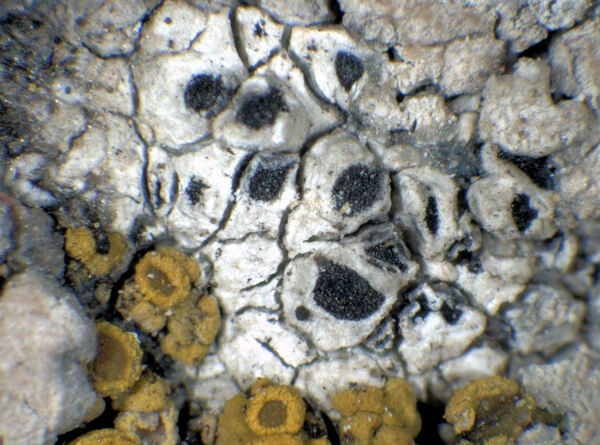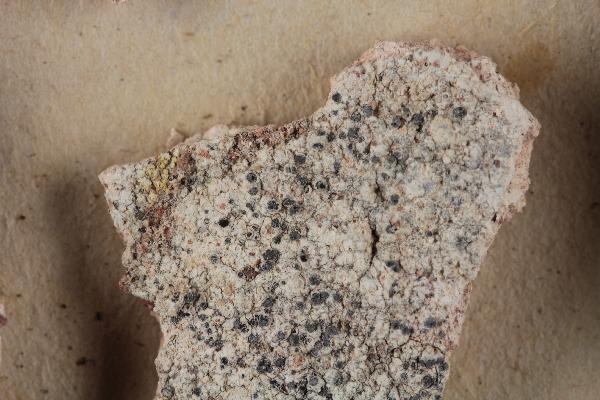Diplotomma murorum (A. Massal.) Coppins
in Hawksworth & al., Lichenologist, 12: 106, 1980. Basionym: Diplotomma alboatrum var. murorum A. Massal. - Ric. Auton. Lich. Crost.: 98, 1952.
Synonyms: Buellia epipolia var. murorum (A. Massal.) Zahlbr.
Distribution: N - Ven (Lazzarin 2000b), TAA (Nascimbene & al. 2021, 2022), Emil (Nimis & al. 1996, Fariselli & al. 2020), Lig. C - Abr (Nimis & Tretiach 1999). S - Bas (Nimis & Tretiach 1999).
Description: Thallus crustose, inapparent to more or less continuous and powdery, whitish to pale grey, epruinose, forming small patches on the thalli of Kuettlingeria teicholyta. Medulla white, I-. Apothecia lecideine, black, 0.3-1.2 mm across, subsessile, with a soon convex, heavily white-pruinose disc, a thin, sometimes excluded proper margin, and often a pseudothalline margin in young apothecia. Proper exciple thin, brown in outer part, colourless to pale brown in inner part, of radiating hyphae; epithecium brown; hymenium colourless, K/I+ blue; paraphyses simple, c. 2 μm thick at mid-level, the apical cells up to 3 μm wide; hypothecium brown. Asci 8-spored, clavate to cylindrical-clavate, the apical dome K/I+ dark blue with a pale, conical-pointed apical cushion (axial mass), the wall I-, but the thin outer gel I+ blue, approaching the Bacidia-type. Ascospores 3-septate, brown, ellipsoid, sometimes slightly curved, thick-walled, 20-22 x 7.5-9 μm. Photobiont chlorococcoid. Spot tests: K-, C-, KC-, P-, UV-. Chemistry: without lichen substances.Note: a mild-temperate lichen starting the life-cycle on species of the Kuettlingeria teicholyta-complex, the peculiar biology of which deserves further study.
Growth form: Crustose
Substrata: rocks
Photobiont: green algae other than Trentepohlia
Reproductive strategy: mainly sexual
Most common in areas with a humid-warm climate (e.g. most of Tyrrenian Italy)
paras Kuettlingeria teicholyta
Commonnes-rarity: (info)
Alpine belt: absent
Subalpine belt: absent
Oromediterranean belt: absent
Montane belt: absent
Submediterranean belt: rather rare
Padanian area: extremely rare
Humid submediterranean belt: rather rare
Humid mediterranean belt: very rare
Dry mediterranean belt: absent
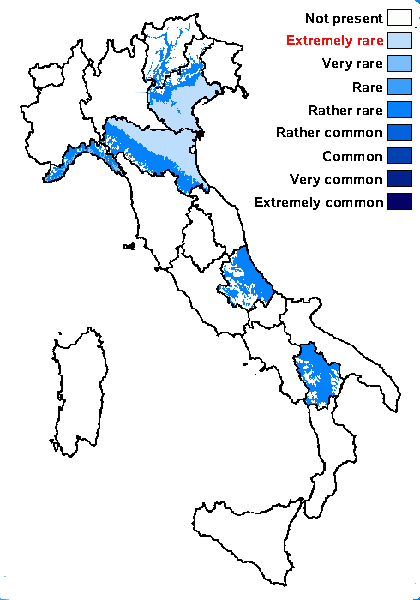
Predictive model
Herbarium samples
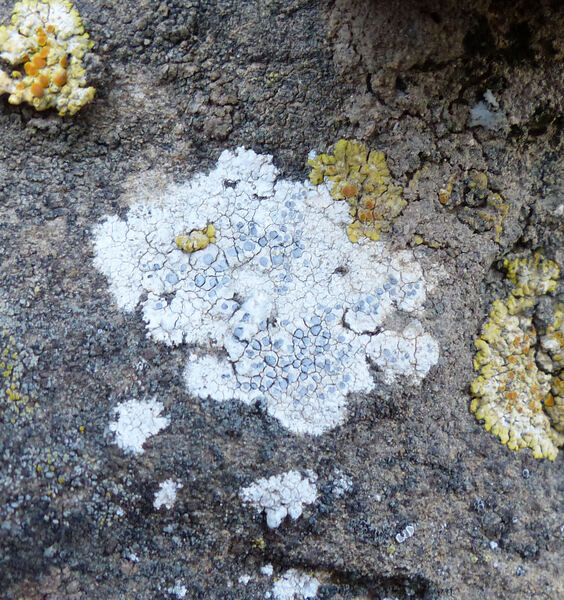

Andrea Moro; Owner: Department of Life Sciences, University of Trieste
Italy, Friuli Venezia Giulia, Trieste, Trieste, Conconello
14/02/2017


Andrea Moro; Owner: Department of Life Sciences, University of Trieste
Italy, Friuli Venezia Giulia, Trieste, Trieste, Conconello
14/02/2017
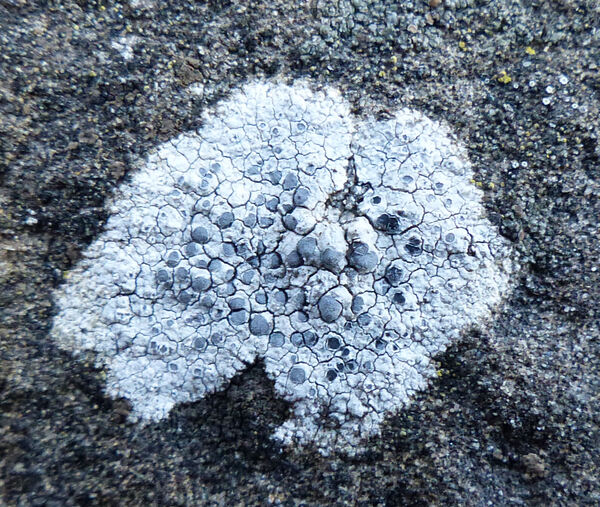

Andrea Moro; Owner: Department of Life Sciences, University of Trieste
Italy, Friuli Venezia Giulia, Trieste, Trieste, Conconello
14/02/2017
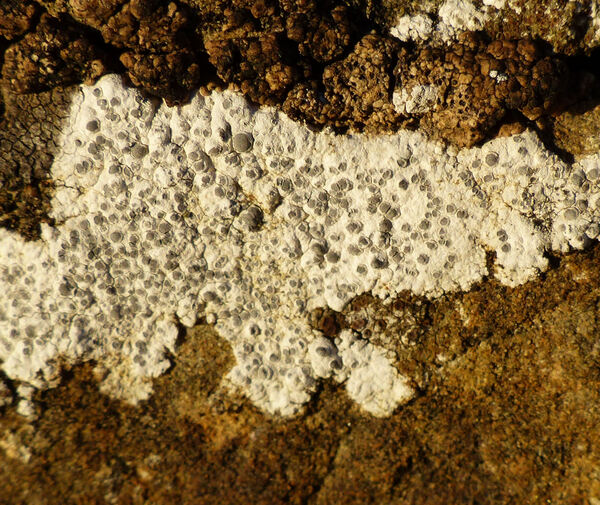

Andrea Moro; Owner: Department of Life Sciences, University of Trieste
Italy, Friuli Venezia Giulia, Trieste, Trieste, Conconello
14/02/2017
Growth form: Crustose
Substrata: rocks
Photobiont: green algae other than Trentepohlia
Reproductive strategy: mainly sexual
Most common in areas with a humid-warm climate (e.g. most of Tyrrenian Italy)
paras Kuettlingeria teicholyta
Commonnes-rarity: (info)
Alpine belt: absent
Subalpine belt: absent
Oromediterranean belt: absent
Montane belt: absent
Submediterranean belt: rather rare
Padanian area: extremely rare
Humid submediterranean belt: rather rare
Humid mediterranean belt: very rare
Dry mediterranean belt: absent

Predictive model
| Herbarium samples |


Andrea Moro; Owner: Department of Life Sciences, University of Trieste
Italy, Friuli Venezia Giulia, Trieste, Trieste, Conconello
14/02/2017


Andrea Moro; Owner: Department of Life Sciences, University of Trieste
Italy, Friuli Venezia Giulia, Trieste, Trieste, Conconello
14/02/2017


Andrea Moro; Owner: Department of Life Sciences, University of Trieste
Italy, Friuli Venezia Giulia, Trieste, Trieste, Conconello
14/02/2017


 INDEX FUNGORUM
INDEX FUNGORUM
 GBIF
GBIF
 DOLICHENS
DOLICHENS
